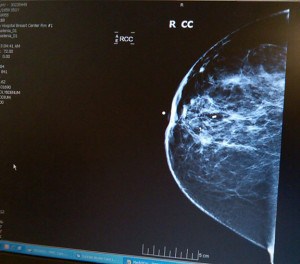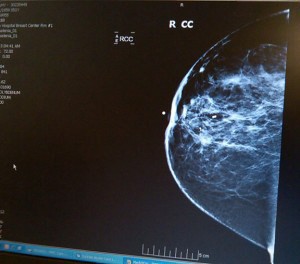Dying to Be Thin
 Jennifer De Jesus is a student in the Macaulay Honors College at Hunter and an avid movie watcher. She is also an employee of the Health Professions Education Center, which has one of the largest collection of health films in the New York City area.
Jennifer De Jesus is a student in the Macaulay Honors College at Hunter and an avid movie watcher. She is also an employee of the Health Professions Education Center, which has one of the largest collection of health films in the New York City area.
Brought to us by NOVA, this film, Dying to Be Thin, explores the gravity of two eating disorders, bulimia and anorexia, which have reached epidemic levels in America. According to the National Association of Anorexia Nervosa and Associated Disorders, twenty-four million people suffer with an eating disorder. Through multiple personal accounts, this film emphasizes that anorexia and bulimia afflict both women and men; as well as the dire health consequences on the human body.
The first story the viewer encounters is about a sixteen year old named Randy Meyers, an athlete who died of anorexia. Randy’s story is just one out of many boys, athletes in particular, pressured to fit into certain weight classes or body types. Then there is the story of twins, Kate and Andy, which would ritualize vomiting during their college years. Lastly, there is the story of Rene, a flight attendant, who became anorexic because of the derision of her coworkers and passengers. Fortunately for Rene, she researched potential health hazards—damage to the heart, erosion of teeth and gums, kidney problems, intestinal ulcers, insomnia, memory loss—and got help.
One of the important points of this film is that anorexia or bulimia is not always related to food or body image. Some anorexics and bulimics acquire eating disorders because of a traumatic childhood: sexual and physical abuse, living with an alcoholic parent, or an excessively controlling parent. Because of this upbringing, anorexics/bulimics gain control of their lives, by starving, binging or vomiting. Then there are other bulimics/anorexics which have Body Dysmorphic Disorder, a psychological disorder in which the affected person is excessively concerned about a perceived defect in his or her physical features.
Body Dsymorphic Disorder is constantly being reinforced by the $59.7 billion diet industry. It is this very same industry that profits every time an anorexic, like Andy, consumes 25 diet pills a day, drinks 3 to 4 hunger suppressant drinks a day, or constantly buys the latest exercise equipment. But the diet industry is not the only one to blame, after all it exists because of a high demand, the media also plays a tremendous role in shaping ideas of beauty. This can be seen throughout history, as different traits fell in and out of fashion: excessively pale skin of the Elizabethan era to the slender flapper of the 1920s to the voluptuous, (size 12) Marilyn Monroe. This “beauty pressure” not only applies to women, whom currently strive for a thin waist and a large bust, but also to men, who strive to be tall and muscular. Even worse is the fact that this pressure is spreading outside the US, and through the Western media influences other countries. Brazil, for example, was a country proud of curvier women, but recently this pride has disappeared and Brazil now consumes the most diet pills in the world.
Thankfully there is now a backlash to standard ideas of beauty in the mainstream media. In 2006, after the death of four models, underweight models were banned from the Madrid’s Fashion Week; an attempt to portray healthy images in fashion. Another popular campaign is Dove’s Campaign for Real Beauty. Through videos and commercials, Dove is attempting to change what people view as beautiful. Their first commercial, “Evolution”, focuses on the way Photoshop is used to create advertisement, distorting the image of real achievable beauty. Their other video “Onslaught” portrays a young girl bombarded with images of women in the media, and ends with the message “talk to your daughter, before the media does”. With a changing perception of the range beauty can be, one can only hope that a more accepting culture of beauty will decrease the pressure to be thin, leading many into bulimia and anorexia.
Jennifer De Jesus is a student in







